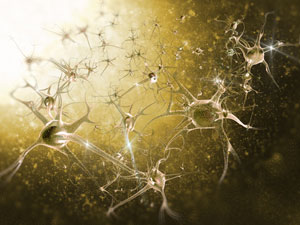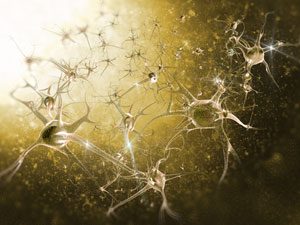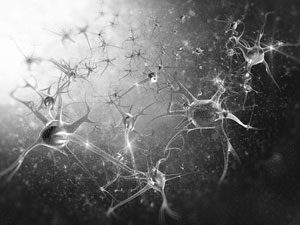
Dra. Brigitte van Zundert: La lucha científica contra las enfermedades degenerativas
La esclerosis lateral amiotrófica (ELA) es una enfermedad neurodegenerativa y progresiva de la que aún no está claro su origen y que afecta a las neuronas mo- toras, o motoneuronas, del cuerpo humano. Con el tiempo, estas motoneuronas mueren, lo que impide al paciente tener control motor sobre su cuerpo, generando rigidez muscular, incapacidad de movimiento y, en las últimas etapas de la enfermedad, dificultad para respirar.

Dra. Brigitte van Zundert del Centro de Investigaciones Biomédicas (CIB) de la Universidad Andrés Bello y su equipo ha logrado importantes avances que han permitido conocer con mayor profundidad la naturaleza de ELA.
La doctora van Zundert destaca que su investigación ha demostrado que la en- fermedad comienza a edad muy temprana, incluso décadas antes de aparecer los primeros síntomas motores. “Tomando en cuenta esto, nuestro objetivo es establecer los mecanismos exactos que gatillan ELA en edad temprana y a la vez identificar biomarcadores pre-sintomáticos. Si logramos esto, la persona tendrá la oportunidad de prevenir y retrasar el desarrollo de su enfermedad utilizando fármacos específicos, y llevando una dieta saludable y actividad física frecuente, además de evitar el estrés psicológico que la enfermedad acarrea”.
Asimismo, la investigadora de U. Andrés Bello sostiene que otro de los avances logrados con su equipo de trabajo, ha sido la identificación de los tipos de cé- lulas nerviosas que están involucradas directamente en ELA. “Descubrimos que los astrocitos, células que son muy importantes para el soporte metabólico de las neuronas, bajo ciertas circunstancias liberan un factor tóxico, que provoca la muerte de las motoneuronas. Hemos encontrado también que el blanco de este factor tóxico es un canal sensible al voltaje ubicado en la membrana de las moto- neuronas: al activar este canal, éstas se sobreactivan y mueren”.
Finalmente, la Dra. Van Zundert expone que “en nuestra investigación más recien- te, con el apoyo del Dr. Martín Montecino, director del CIB; y la Dra. Lorena Varela, estamos generando células cerebrales a partir de la reprogramación de células madres pluripotenciales inducidas (iPSC), las que derivan de células de la piel (fibroblastos) de personas sanas y de pacientes con ELA. El objetivo es establecer si estas células humanas reprogramadas dañan las motoneuronas por los mismos mecanismos primarios que hemos visto en nuestros otros modelos de estudio”.
Descargar PDF: La lucha científica contra las enfermedades degenerativas
The scientific fight against neurodegenerative diseases
Amyotrophic lateral sclerosis (ALS) is a progressive neurodegenerative disease of unknown origin. This disease affects motor neurons (or motoneurons) in the hu- man body and, over time, these motoneurons die. This impedes self-control of the body and generates rigidity, the inability to move and, in the later stages of the disease, impairs breathing.

The Center for Biomedical Investigation (CIB) of Universidad Andrés Bello is one of two laboratories in Chile researching this disease. The CIB team, led by Dr. Brigitte van Zundert and supported by CIB Director Dr. Martín Montecino and Dr. Lorena Varela, has achieved important advancements that have increased our knowledge on the nature of ALS.
Dr. van Zundert highlights that this line of research has so far demonstrated that ALS begins at a very young age, decades before even the first motor symptoms appear. “Taking this into account, our goals are to uncover the exact mechanisms that trigger ALS at a young age and, through this, identify pre-symptomatic biomarkers. If we achieve this, the patient will be able to prevent disease onset through specific medicines, a healthy diet, and frequent physical activity. This early diagnosis will also prevent the psychological stress that many ALS patients suffer.” Other advancements made by the CIB team include the identification of cells in the brain that are involved in ALS. “We discovered that astrocytes, which are very important in the metabolic support of neurons, can provoke motoneuron death by releasing a toxic factor. We found that the target of this factor is a voltage-gated channel located on the motoneuron’s membrane. When the channel is activated by the toxic factor, the motoneuron becomes overactive and dies,” adds Dr. van Zundert.
Dr. van Zundert concludes, “In our most recent work, we are generating brain cells study is to establish if these reprogrammed human cells harm the motoneurons through the reprogramming of induced pluripotent stem cells (iPSC). These cells give rise to skin cells (fibroblasts) in healthy and ALS patients. The objective of this through the same primary mechanisms observed in other models.”
Download PDF: The scientific fight against neurodegenerative diseases
